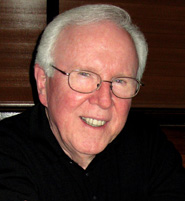 By Jim Gilmartin
By Jim Gilmartin
Although all of us have basic values and motivators that drive us, we manifest them differently as we move through the spring, summer, fall and winter of life. Selling to boomers and older consumers is different primarily because of this shift in values. Our need for identity, relationships, purpose, gaining knowledge and growth, rejuvenation and recreation are always with us, but as we grow older, we focus more on having meaningful experiences, rather than gaining material goods.
Emotions Drive the Purchase Decision
As important as it is to understand what boomers and older consumers think, it’s even more important to understand how they think. When selling to these markets, focusing on product features and benefits often results in a losing strategy, especially early on in the process. Research has shown that consumers’ final decisions are not the direct product of the reasoning process; in fact, emotions drive boomers and older consumers in their purchase decisions. The reasoning process will confirm their decision, but it doesn’t start there.
In the sales process, typically salespeople speak to potential customers in a staccato fashion. They immediately start talking about their service’s features and benefits without trying to build the relationship first. This approach is not usually effective, because as we get older we become more resistant to absolute guarantees or propositions.
Salespeople should allow the consumer to pull wanted information, not push it at them:
• Deliver objective information at a slow-to-moderate pace.
• Avoid jumping around on the issue.
• Maintain a steady equilibrium as you speak.
• Ask many open-ended questions that start the customer talking.
• Never rush customers or patronize them. The older we get, the more we reject being patronized.
Anecdotes Work Well
When communicating with these markets, storytelling works well, since today’s consumer universe is more age-weighted toward mid-life values and there is a definite resistance to neutral information (product-related features). Whoever tells the best story wins! Go with the grain of the brain and integrate your data into an emotional matrix to satisfy the customer’s need and gauge the potential emotional and experiential quality of the relationship before talking about the product’s benefits and features.
Honesty Is the Best Policy
Don’t overstress a sense of urgency when selling to baby boomer and older consumers. If you say, “Buy it today or you won’t get the discount,” consumers most likely will know they can go elsewhere. They have plenty of choices and options; they don’t need you, you need them. Begin a sales presentation by developing a relationship.
Understand you’re in an emotionally charged environment and take the time to practice focused listening. Be vulnerable, honest and open about who you really are. The more honest you are, the better your chances are of developing a good solid bond in the relationship. Show empathy and reduce your reliance on sales charts and other tools, and take more time to understand the customer’s needs and wants.
Challenge your current sales approach and gain a better understanding of the physical as well as behavioral changes of aging consumers. Remember that as we age, we can’t hear, taste or see as well, and if your sales approach or environment isn’t user-friendly to these consumers, you’re often wasting your time. Small print is pejorative in nature.
Ads, and other marketing communications and sales collateral that have small print because of potential liability issues are usually interpreted as untrustworthy. Saying less is more in many instances. Let consumers use their imaginations to interpret your communications. This approach reduces the need to use small print, further reducing the potential of customer dissatisfaction and litigation.
Finally, in addition to Sales 101, consider sensitizing and training salespeople to the different perceptions, values and motivators we all have as we move through life. Remember what one of the most prolific of sages, Anonymous, once said, “If you have sight, you’re blessed. If you have insight, you’re a thousand times blessed.”
Jim Gilmartin is president of Chicago-based Coming of Age, Inc. (comingofage.com), a marketing/ad agency, PR and training firm specializing in helping clients increase market share and profit in baby boomer and senior customer markets. He has co-authored “Market Smart: The Best in Age & Lifestyle Specific Design.” He can be contacted by e-mailing jim@comingofage.com.